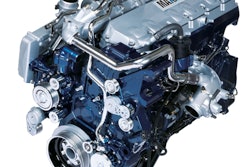Jerry McGuire isn’t the only one waiting for someone to show him the money.
Fleet managers considering the adaptation of natural gas are on the lookout, too.
Information abounds about how much cheaper natural gas is when compared to diesel. However, with the price of an alt-fuel truck far surpassing that of conventional tractors, concerns arise that upfront expense can offset long-term gains.
At an industry panel at the ACT Expo in Washington D.C. Thursday, several fleet executives who have successfully implemented natural gas in their operations shared their experiences, and how they’ve made it work.
Scott Perry, Vice President, Vehicle Supply Management for Ryder, says his company leaned heavily on the experiences of the refuse industry, where alternative fuels have increasingly become the norm.
“A lot of the lessons learned early on were built on experience from the refuse industry,” he says. “We learned a lot of technical lessons from Cummins ISL-G.”
Jeff Shefchik, President of Paper Transport, says his company also leaned on the refuse models, and the industry as a whole has benefited from the beta testing it provided.
“The refuse industry really led the way,” he says. “A lot of the dealerships have natural gas (technical) eexperience because there’s tens of thousands of refuse trucks out there running on natural gas.”
Among the technical lessons Perry’s team learned was the “silk glove treatment” natural gas engine components require.










